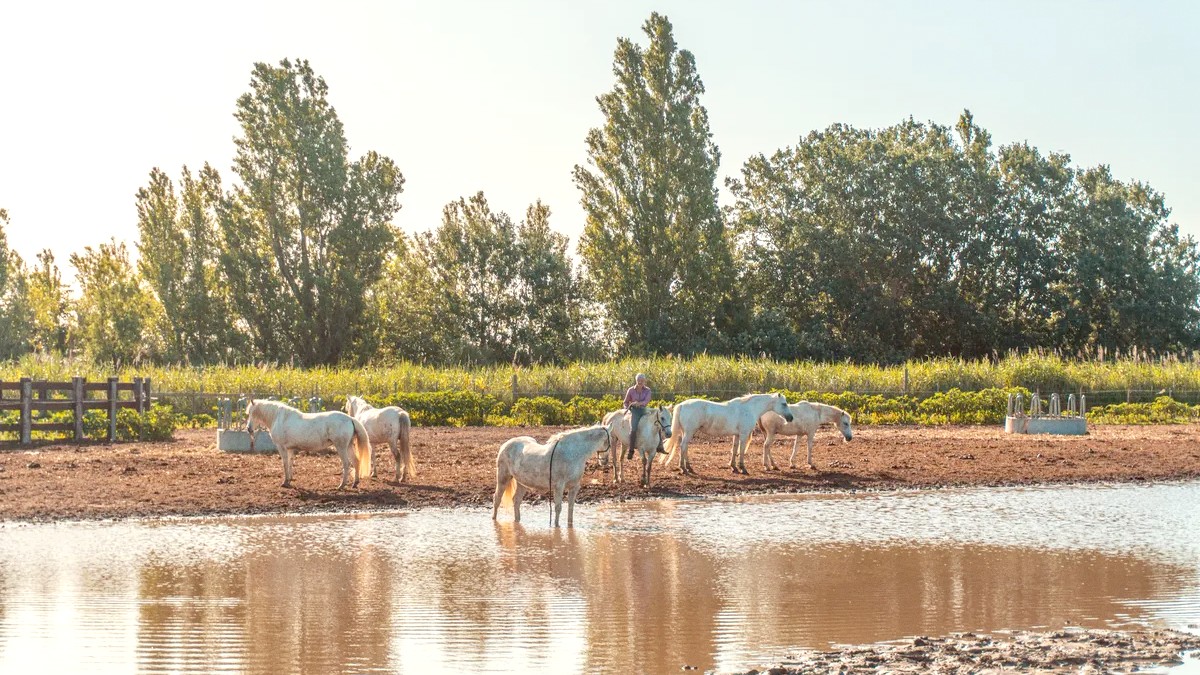
France
The Camargue's weather patterns influence the landscape and your travel experience. Temperatures vary across seasons, and unique winds can shape daily conditions.
Rainfall in the Camargue is generally low. Most precipitation occurs during autumn and winter. Summers are very dry, with extended periods of sunshine. Humidity can be high, especially near the étangs (lagoons), particularly during summer. This can make high temperatures feel more intense.
The Mistral wind, a strong, cold, dry wind from the north, influences the Camargue's climate. It can blow fiercely, specifically in winter and spring, affecting perceived temperatures and outdoor activities. When the Mistral blows, even mild temperatures can feel much colder due to wind chill. For summer visits, sun exposure is high.
High-SPF sunscreen and a wide-brimmed hat protect you from the sun's intensity. Hydration is during warm periods.
June to August
Warmest weather, ideal for beaches and water activities. Most tourist services operate at full capacity. Major cultural events and bull festivals occur during this time.
Most crowded period, leading to higher prices. Intense heat limits strenuous outdoor activities midday. Mosquito presence is high near wetlands.
April-May, September-October
Enjoy pleasant temperatures. Fewer crowds than summer, and prices often lower. Ideal for wildlife viewing, especially migratory birds, and excellent for hiking and cycling. May offers prime conditions for flamingo nesting.
Some smaller tourist services or remote restaurants may have limited hours early or late in the season.
November to March
Fewest crowds and lowest prices. Excellent for birdwatching, especially overwintering species like flamingos. Landscapes have an unique, atmospheric beauty, offering a quiet, authentic local experience.
Cooler temperatures and possibility of strong Mistral winds limit outdoor activity options. Some attractions, guesthouses, and restaurants may close for the season.
Spring and Autumn present comfortable temperatures for most outdoor exploration, including cycling and hiking, avoiding summer's intense heat and winter's chill. July and August have the warmest sea temperatures for beach activities.
Bull events typically occur in July and August. The Gypsy Pilgrimage in Les Saintes-Maries-de-la-Mer is a major event in May.
Autumn for migratory birds, Winter for overwintering species including large flamingo flocks, Spring for nesting activity.
Spring and Autumn for pleasant temperatures.
July and August for warmest sea temperatures.
Spring and Autumn for milder temperatures and fewer insects.
Mainly July and August for bull events, May for Gypsy Pilgrimage.
France is a member of the Schengen Area; entry policies align with Schengen guidelines.
Your nationality shapes your visa needs for France.
Gathering correct documents is necessary for entry into France.
The Euro (€) is the currency. ATMs are widely available in larger towns. Credit and debit cards are widely accepted. Carry some cash for smaller purchases or rural shops.